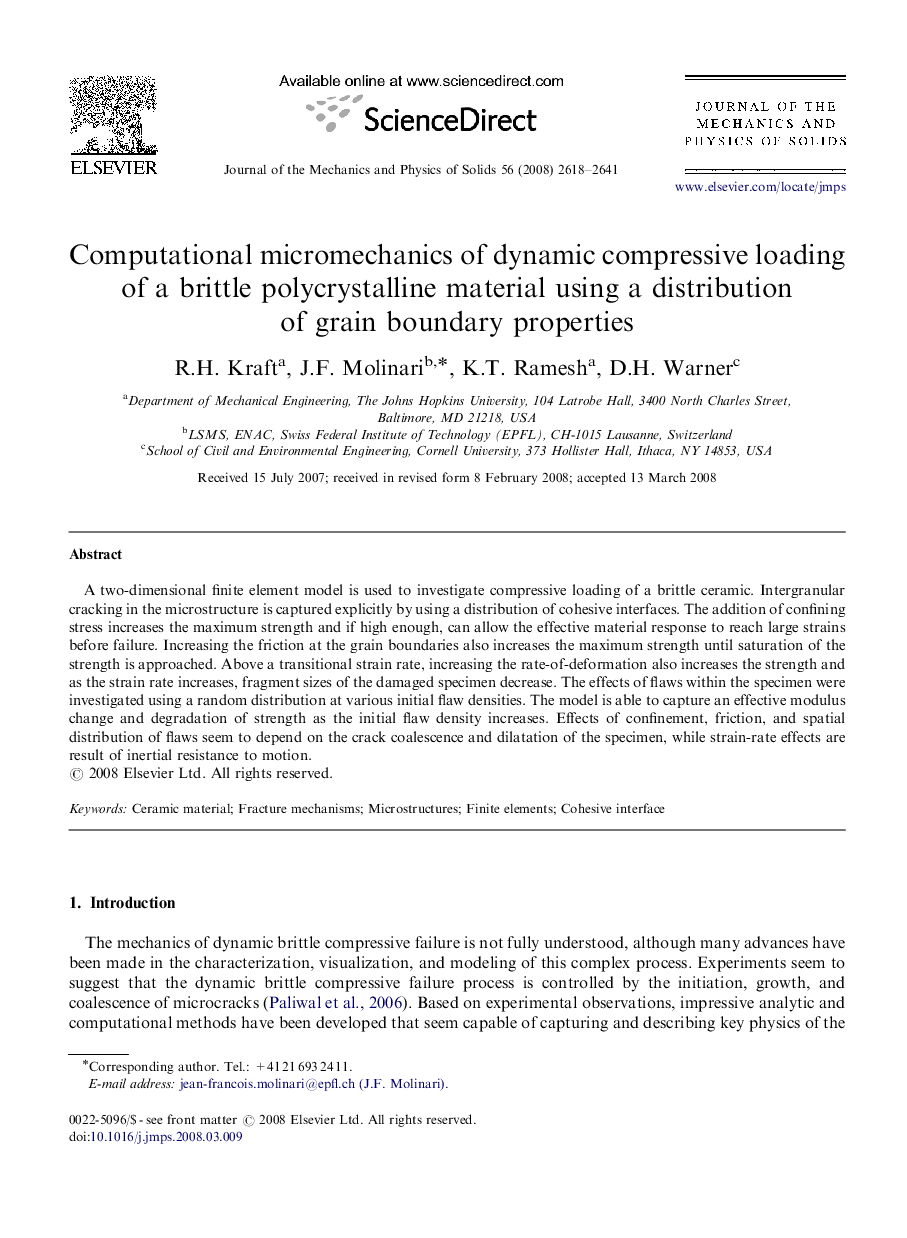| Article ID | Journal | Published Year | Pages | File Type |
|---|---|---|---|---|
| 796939 | Journal of the Mechanics and Physics of Solids | 2008 | 24 Pages |
A two-dimensional finite element model is used to investigate compressive loading of a brittle ceramic. Intergranular cracking in the microstructure is captured explicitly by using a distribution of cohesive interfaces. The addition of confining stress increases the maximum strength and if high enough, can allow the effective material response to reach large strains before failure. Increasing the friction at the grain boundaries also increases the maximum strength until saturation of the strength is approached. Above a transitional strain rate, increasing the rate-of-deformation also increases the strength and as the strain rate increases, fragment sizes of the damaged specimen decrease. The effects of flaws within the specimen were investigated using a random distribution at various initial flaw densities. The model is able to capture an effective modulus change and degradation of strength as the initial flaw density increases. Effects of confinement, friction, and spatial distribution of flaws seem to depend on the crack coalescence and dilatation of the specimen, while strain-rate effects are result of inertial resistance to motion.
